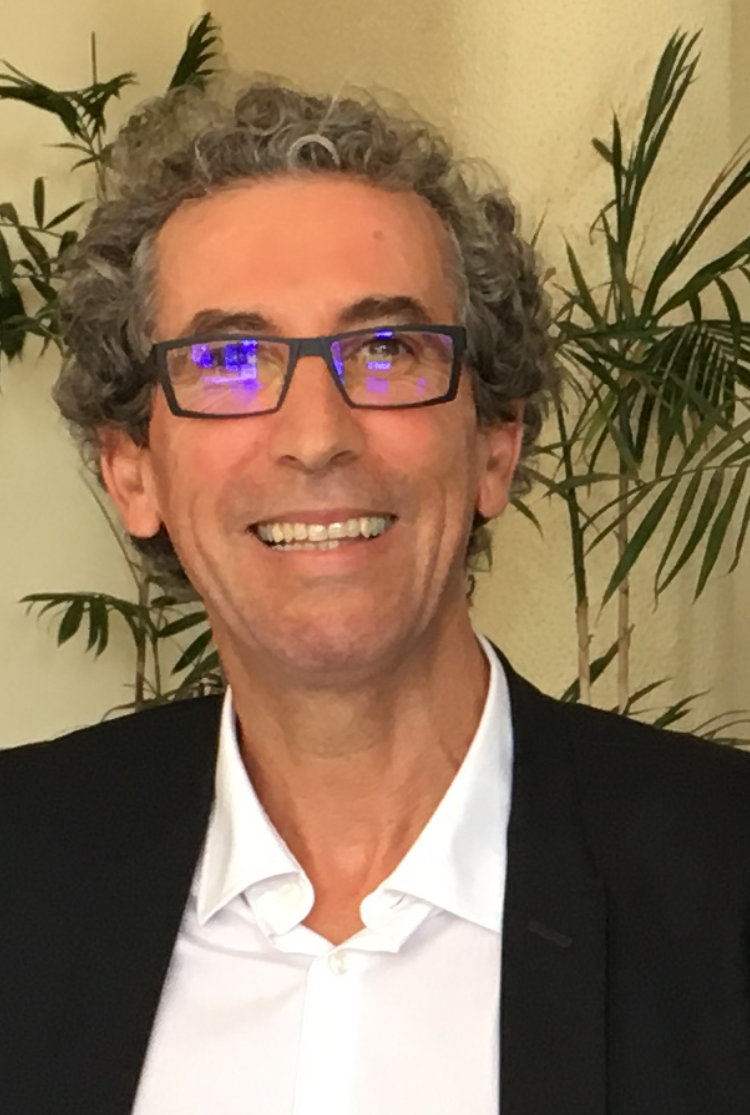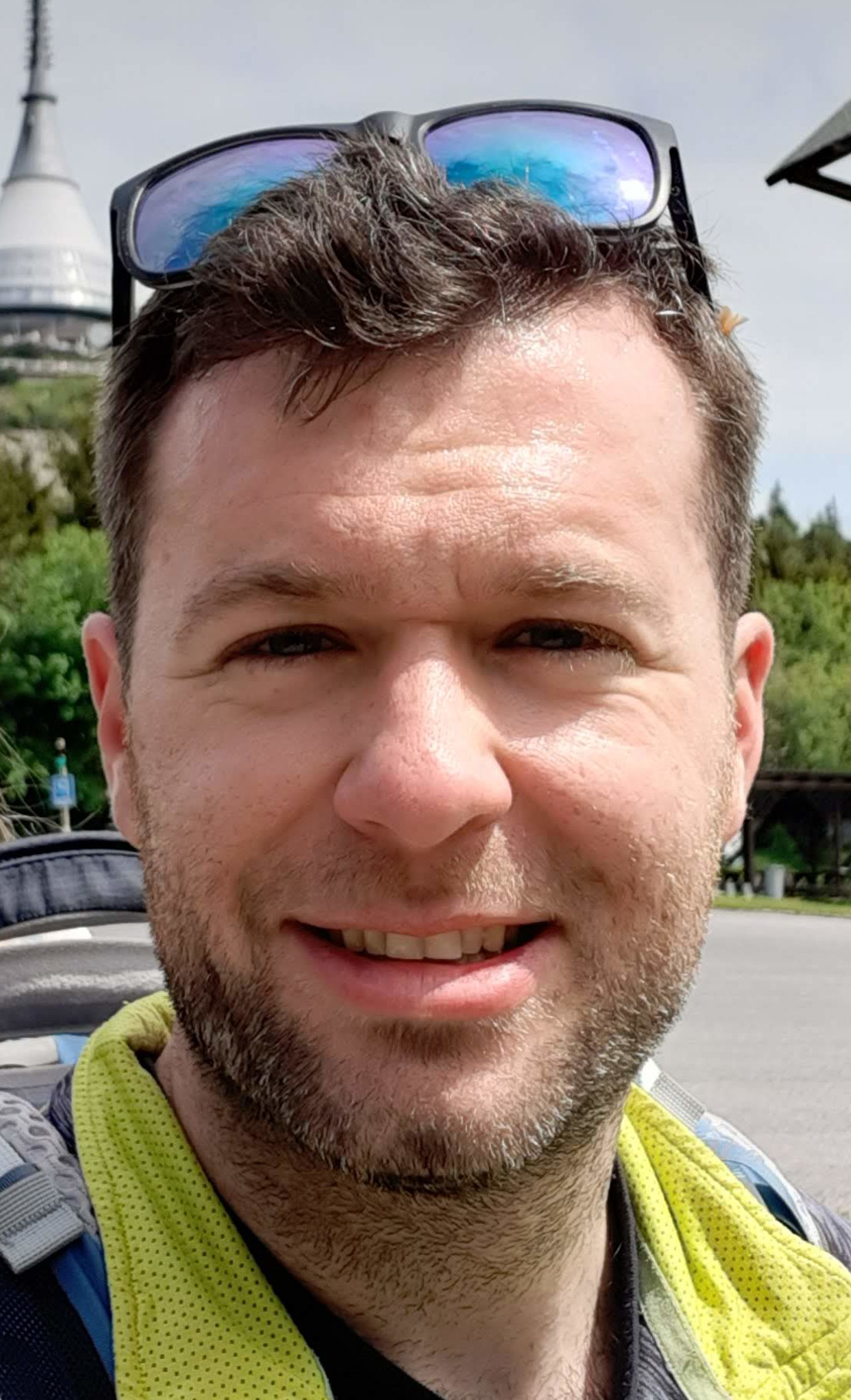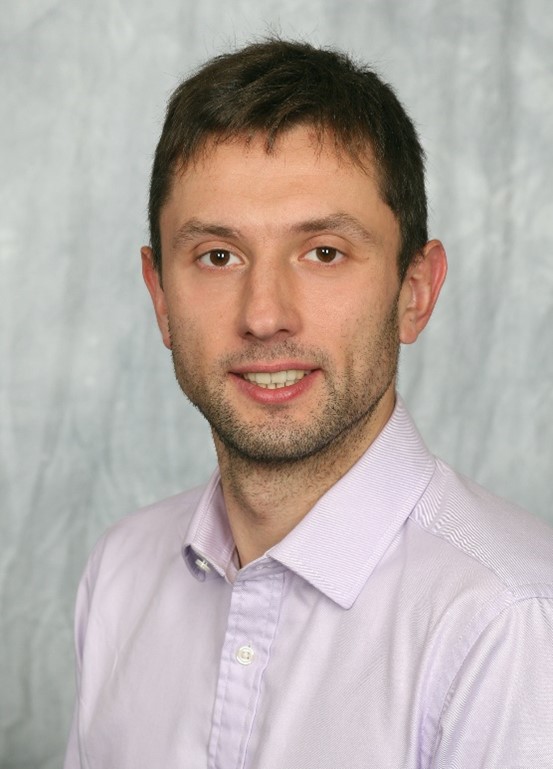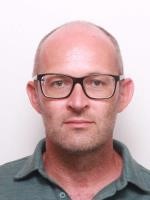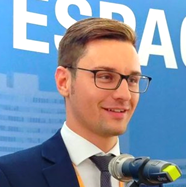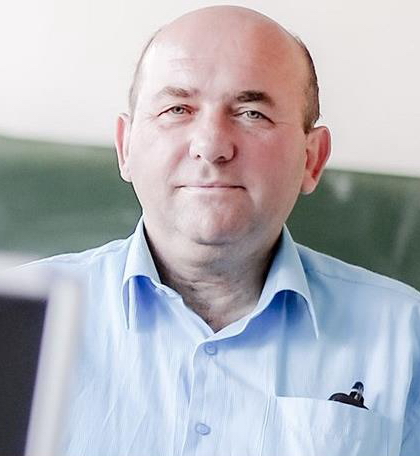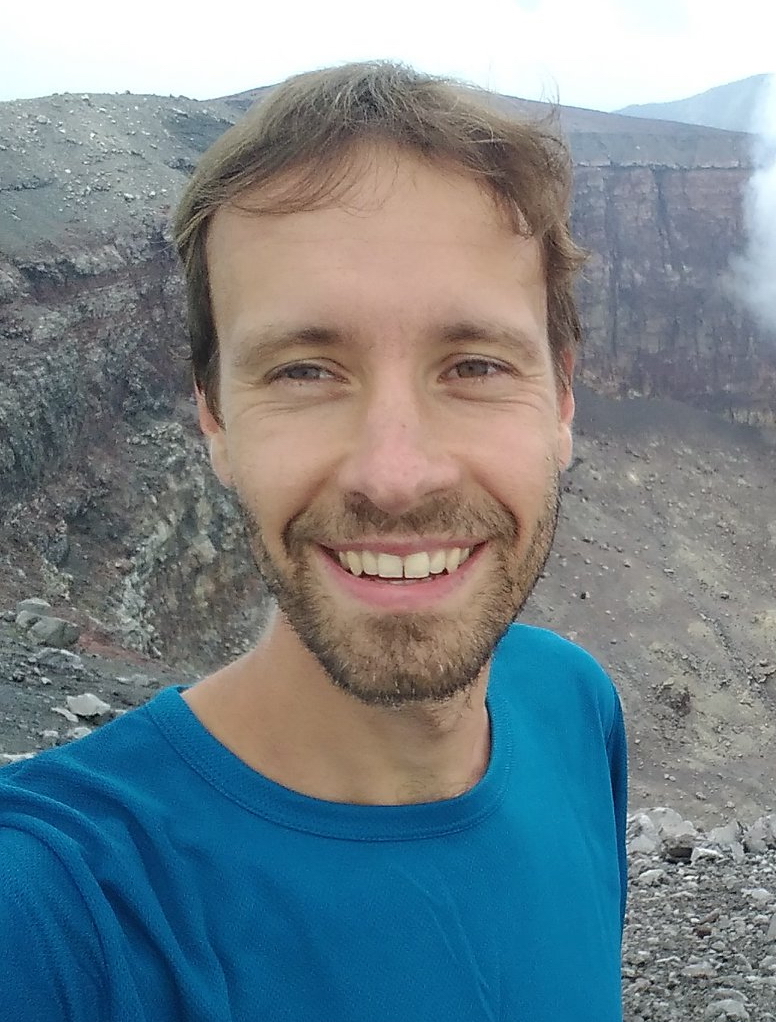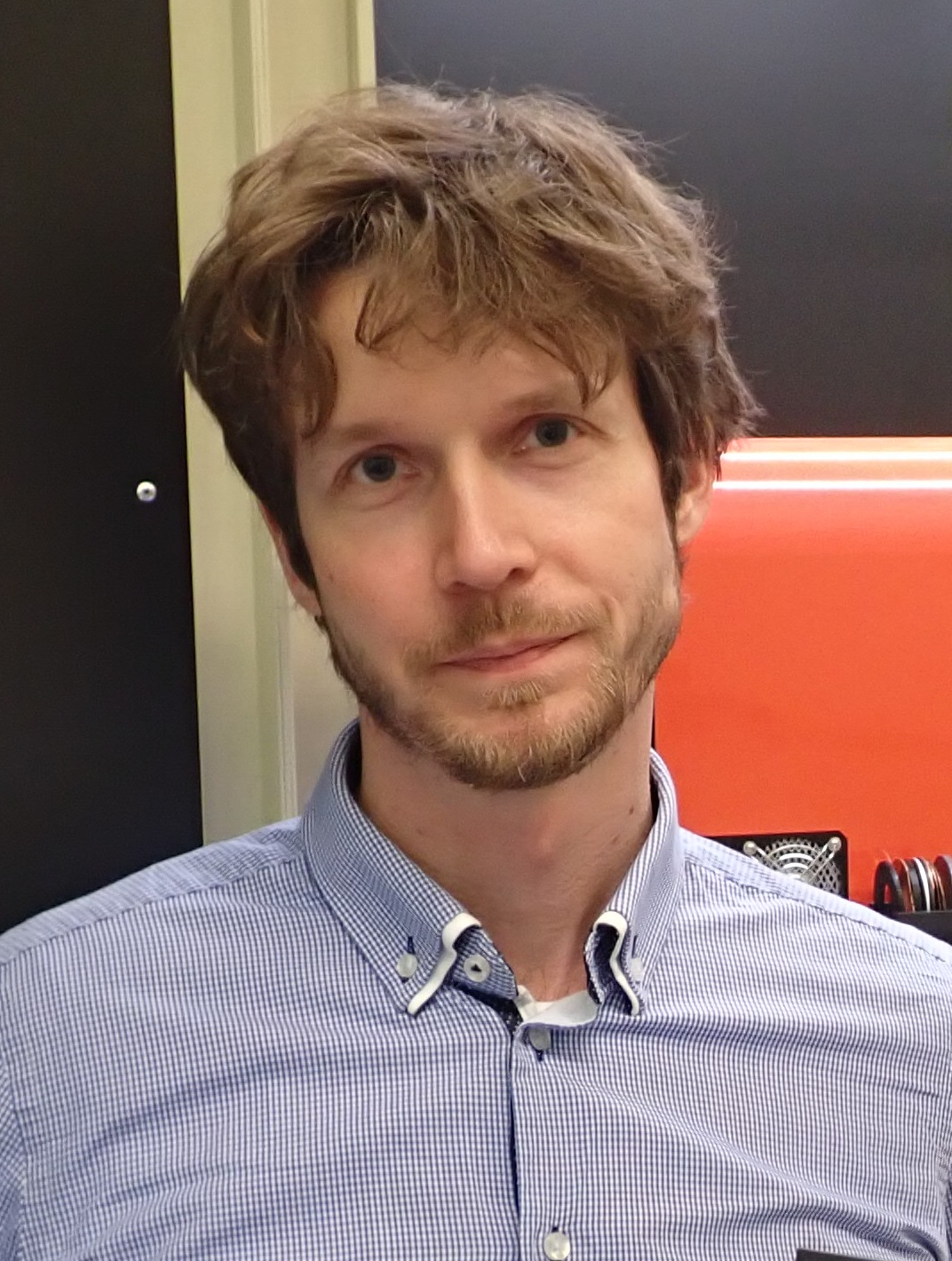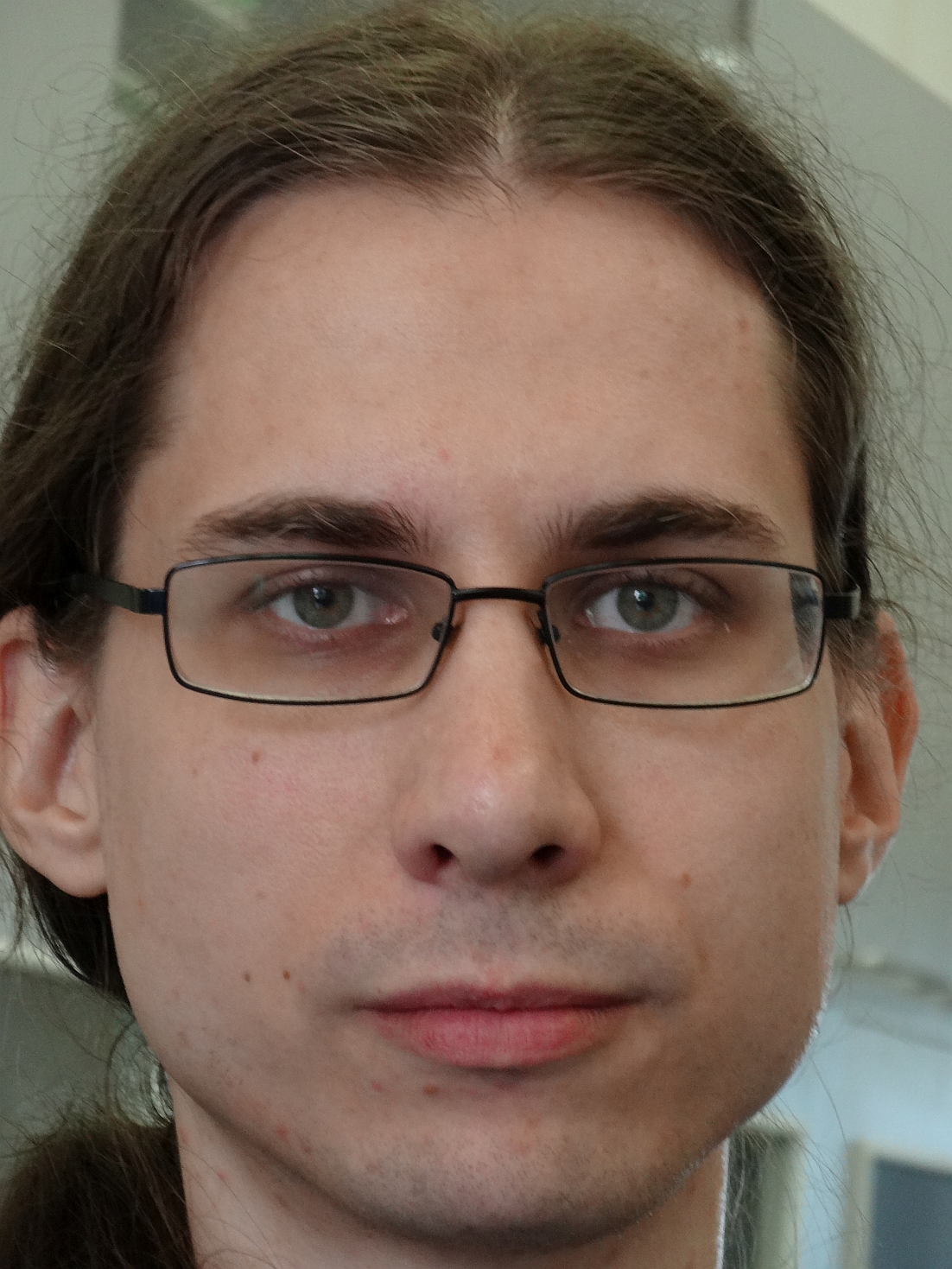PROGRAMME SHORT COURSES
Sunday June 20, 2021
|
|
Title |
Speaker |
Speaker affiliation and email address |
|
08:40 – 08:45 |
Welcome |
Ludo Vermeeren (Short Course Chair)
|
SCK CEN, Belgium IEAP CTU in Prague, Czech Rep. |
|
08:45 – 08:55 |
Introduction by the participants |
All participants |
|
|
08:55 – 10:00 |
Radiation detection and measurement methods – part I |
Abdallah Lyoussi |
CEA/INSTN, France |
|
10:00 – 10:15 |
Coffee Break |
||
|
10:15 – 11:00 |
Radiation detection and measurement methods – part II |
Abdallah Lyoussi |
CEA/INSTN, France |
|
11:00 – 12:00 |
Neutrino and Dark Matter Detection |
Lukáš Fajt |
IEAP CTU in Prague, Czech Rep. |
|
12:00 – 13:00 |
Sandwich Lunch |
||
|
13:00 – 14:45 |
Lab session 1: |
Giacomo Mangiagalli |
CAEN S.p.A., Italy, |
|
14:45 – 16:30 |
Lab session 2: |
Erica Fanchini |
CAEN S.p.A., Italy, |
|
16:30 – 16:45 |
Coffee Break |
||
|
16:45 – 18:30 |
Lab session 3,4,5: |
Jan Dudák |
IEAP CTU in Prague, Czech Rep., |
Monday June 21, 2021
|
|
Title |
Speaker |
Speaker affiliation and email address |
|
09:00 – 10:00 |
Hybrid Pixel Detector Applications in Space |
Benedikt Bergmann |
IEAP CTU in Prague, Czech Rep. |
|
10:00 – 10:30 |
Counting neutrons in a nuclear reactor by reactor dosimetry |
Jan Wagemans |
SCK CEN, Belgium |
|
10:30 – 10:45 |
Coffee Break |
||
|
10:45 – 12:00 |
Advanced diagnostic concepts for fusion reactors |
Jean-Marc Layet |
Aix-Marseille University, France |
|
12:00 – 13:00 |
Sandwich Lunch |
||
|
13:00 – 16:30 |
Lab session 3: |
Vladimír Vícha and Michael Holík |
IEAP CTU in Prague, Czech Rep., |
|
16:30 – 16:45 |
Coffee Break |
||
|
16:45 – 17:45 |
Optional Examination |
|
|
|
18:15 |
Proclamation |
|
|
The classical lectures will be partly given on-site, partly via remote connection. They will be streamed to all students simultaneously via a Zoom meeting, allowing for interaction between students and lecturers.
Short Courses venue: Institute of Experimental and Applied Physics, Czech Technical University in Prague, Husova 240/5, 11000 Prague, CR.
The practical sessions by CAEN (modules L1 and L2) will be offered in remote mode, simultaneously for the students on-site and those remotely connected. Module L3 will be held as a real hands-on course for the students on-site; separately a remote interactive demonstration session will be organized for the remotely connected students. Modules L4 and L5 can only be organized on-site. Remotely connected students can use the time on Monday afternoon to prepare for the examination.
Participants to the Short Courses have the opportunity to perform a multiple choice test. This test will take place immediately after the courses on Monday June 21, from 16:45 until 17:45.
Proclamation and the official awarding of the certificates is planned later that evening at 18:15. These certificates can be used for obtaining ECTS credits at the participants’ university.
Participants to the Short Courses who decide not to perform the examination can receive a Certificate of Attendance on request.
Module 1: Radiation detection and measurement methods
|
Prof. Abdallah Lyoussi, CEA/INSTN, France |
Summary of the training module Starting from the physical principles, the course will discuss the performances and the limitations of various radiation detectors that can be used in nuclear reactors and in the subsequent stages of the nuclear fuel cycle. Two specific applications will illustrate the practical applications of the detection techniques: neutron dosimetry in fission reactors and nuclear monitoring of the fuel cycle (passive and active neutron measurements, sensing via photo fission, coupling of measurements and combined interpretation). The course will be structured as follows:
|
|
Short CV Prof. Dr. Abdallah Lyoussi is physicist researcher in experimental physics and International Expert in Nuclear Instrumentation and measurement at French Atomic and Alternative Energies Commission CEA in Cadarache, France, since 1994. He is also Professor at French Institute of Nuclear Sciences and Technologies and Aix Marseille University. He received his MSc in nuclear physics from Fes University (Morocco) in 1988 and MSc in Nuclear Engineering from French institute of nuclear sciences and technologies (INSTN) in 1990. In 1994, he received his PhD in nuclear physics on non-destructive assay by using photofission interrogation technique and, in 2002; he received advanced graduation in Research and Development supervising activities on experimental physics (HDR). He was awarded French Nuclear Energy Society price for his works on photofission interrogation as nondestructive measurement by using a LINAC machine. He is the founder and the General Chairman of the international conference ANIMMA (Advancements in Nuclear Instrumentation Measurement Methods and their Applications) that celebrated its 10th anniversary this summer in Portorož. Since 2010, as the main founder he is the CEA scientific coordinator of the LIMMEX join Lab between CEA, CNRS and Aix-Marseille University involved in instrumentation and measurements in extreme media. Since 2014, he is IEEE Distinguish Lecturer. Abdallah Lyoussi has worked on several nondestructive measurement methods such as photofission interrogation, neutron interrogation by using different kinds of detectors, electronics, data acquisition systems and advanced particle production machines like LINAC; neutron generators, X tubes. He developed, patented and published various works related to innovative and advanced nuclear measurement methodologies. Abdallah Lyoussi is now mainly involved in R&D on nuclear instrumentation and measurement in severe media (nuclear reactors, nuclear fuel cycle, dismantling and decommissioning, radioactive wastes assays, severe accident monitoring…). |
|
Module 2: Neutrino and Dark Matter Detection
|
Dr. Lukáš Fajt, |
Summary of the training module Our Universe is composed of about 68 % of dark energy, 27 % of dark matter, and less than 5 % of baryonic matter including < 1 % of neutrinos. Neutrinos and dark matter share many similar features. The same way neutrinos are considered as elementary particles, the nature of dark matter is widely believed to be based on the existence of new type of elementary particles as well. They both interact very weakly with visible matter, and therefore their direct detection is extremely difficult requiring ultra-low background conditions and advanced statistical methods for data analysis. Many theories explaining tiny neutrino masses predict the existence of heavy sterile neutrinos which are serious candidates of dark matter particles. Generally, this is accompanied by lepton number violation which is a necessary ingredient of explanation of matter-antimatter asymmetry of the Universe. That relates neutrinos and dark matter to the cosmological concept of the leptogenesis. In the context of detection of neutrinos and dark matter, decay or annihilation of dark matter particles could present a key role producing neutrino fluxes detectable for large volume neutrino telescopes. The short overview of the recent status of the neutrino and dark matter physics, with emphasis to the experiments where IEAP researchers take an active role in the detector construction, data processing or MC simulations, will be introduced. Namely, experiments Baikal-GVD (neutrino telescope – high energy cosmic neutrinos detection), SuperNEMO (search for neutrinoless double beta decay), S3 (reactor antineutrinos detection & search for sterile neutrinos), DUNE (neutrino oscillations) and PICO (direct dark matter search) are going to be presented. |
|
Short CV Lukáš Fajt currently works on the experiment protoDUNE within the CERN Neutrino Platform Programme during his six months stay as a visiting scholar. Lukas obtained his PhD at the Comenius University in Slovakia with his work “Time Calibration and Pulse Processing of the Baikal-GVD Neutrino Telescope”. His main focus in the Baikal-GVD experiment, where he acts as one of the reconstruction group managers, is a single and double cascade reconstruction and the pulse processing. During his undergraduate education, he had been working on other neutrino experiments like Scube (detection of reactor antineutrinos) and SuperNEMO (search for the neutrinoless double beta decay). |
|
Module 3: Hybrid Pixel Detector Applications in Space
|
Dr. Benedikt Bergmann, |
Summary of the training module Hybrid pixel detectors of Timepix technology have become increasingly interesting for space applications. Several devices are for example flown on the international space station providing a real-time measurement of the radiation levels. A key strength of Timepix is that ionizing particle interactions in the sensor are seen as imprints in the pixel matrix (tracks) with a rich set of features which can be exploited for the identification of impinging particles and particle trajectory reconstruction. The first Timepix (256 x 256 pixels, pixel pitch: 55 µm) used in open space is SATRAM (Space Application of Timepix Radiation Monitor) attached to the Proba-V satellite launched to low earth orbit (LEO) in 2013. In this contribution, measured dose, electron, and proton flux maps are shown. It is demonstrated how the use of machine learning tools improves particle separation. Further, the development and space qualification of a MIniaturized RAdiation Monitor (MIRAM) based on the latest-generation chip of the Timepix family, Timepix3, are described. |
|
Short CV Benedikt Bergmann obtained his PhD at the University of Erlangen-Nuremberg in Germany, with work on the detection and separation of x-rays, neutrons and charged particles using hybrid pixel detectors. Up to now, he authored 78 publications with 245 citations in the Web of Science. He is currently head of the department for “Detectors, electronics and software” at the Institute of Experimental and Applied Physics of the Czech Technical University in Prague (IEAP CTU) and deputy representative of IEAP CTU in the Medipix collaboration. |
|
Module 4: Counting neutrons in a nuclear reactor by reactor dosimetry
|
Prof. Dr. Jan Wagemans, |
Summary of the training module The aim of reactor dosimetry is to determine neutron fluences for various types of applications. One of the most commonly used techniques for this purpose is the neutron activation technique. Surveillance capsules present in nuclear power reactors, for example, are typically equipped with a set of activation wires or foils (dosimeters). After irradiation, the neutron fluence received by the surveillance capsule can be determined from the measured dosimeter activities. Also, many experiments in research reactors (reactor physics experiments, material test irradiations, ...) are equipped with neutron dosimetry in order to provide neutron flux and spectrum information. This course will first present the example of surveillance dosimetry for power reactors. Then some basic aspects of neutron physics will be shortly described. The main part of the course will focus on the neutron activation technique. This will be complemented with practical examples. |
|
Short CV Prof. Dr. Jan Wagemans (1974) graduated in Physics at the University of Ghent, Belgium, in 1997 and obtained his PhD at the same university in 2000. He is author or co-author of more than 100 publications in peer-reviewed journals and conference proceedings mainly in the field of neutron physics and (co-)editor of five books. In 2002 he joined the SCK CEN where he is currently head of the Nuclear Systems Measurements unit and trainer for the SCK CEN Academy. Since 2017 he is visiting professor at the university of Hasselt. Jan Wagemans is chairman of the European Working Group on Reactor Dosimetry (EWGRD). |
|
Module 5: Advanced diagnostic concepts for fusion reactors
|
Prof. Dr. Jean-Marc Layet, |
Summary of the training module Development of diagnostics is crucial in fusion devices. They provide the measurements required for machine protection, plasma control and physics studies. Due to the particular characteristics of fusion plasmas (hot plasma, plasma-wall interactions,..), diagnostics are based on a large variety of physical processes. The complexity of fusion reactors has motivated the development of various kinds of plasma diagnostics using the most advanced technologies. The aim of this conference is to give an introduction into the field of plasma diagnostics (including plasma-wall interaction) taken into account the harsh environment and unexplored “burning plasma” conditions of the next generation of fusion reactors (ITER); we will show that the development and integration of plasma diagnostics in ITER is a major challenge. Development of diagnostics is crucial in fusion devices. They provide the measurements required for machine protection, plasma control and physics studies. |
|
Short CV Prof. Dr. Jean-Marc Layet was born in Marseille in 1952. He is professor at the Aix-Marseille University. He is also vice-president of this University and member of the Scientific Council. He is director of the “Laboratoire de Physique des Interactions Ioniques et Moléculaires” (University – CNRS). He set up a collaboration with CEA Cadarache (Institut de Recherche en Fusion Magnétique, Tore-Supra) to study plasma-wall interactions. His main topics of interest are: Plasma physics, Ion sources, Surface physics, Electrons spectroscopies and Near field microscopy. |
|
LABORATORY SESSIONS
Module L1: Introduction to gamma dose rate, spectroscopic measurements, and source identification
|
Dr. Erica Fanchini, |
Giacomo Mangiagalli, |
Summary of the training module Detection of gamma emitters is one of the main issues in most of the radiological fields, from dismantling and decommissioning to safety and environment. The important aspect to understand are dose rate measurements indicating the seriousness of the situation, but it is also important to identify the source type to better handle the identified material. This short course will focus on an introduction to gamma radiation focusing on the identification of gamma sources based on spectroscopy. The course will end with a hands-on to let the students measure using a handheld instrument based on a specific example, the tagging and characterization of a nuclear waste drum. |
|
|
Short CVs Erica Fanchini (PhD in Physics) is currently working at CAEN as Product Manager involved in the homeland security field and project manager of R&D grants. She got her PhD at the Milano-Bicocca University 2011 with a thesis on the LHCb experiment. She got a post-doctoral fellowship for the Université Joseph Fourier (France) and two at the INFN (Italy) working on fundamental physics experiments and a security application. After her post-doctoral experience, she joined CAEN in 2017 thanks to her relevant experience in the characterization and calibration of equipment used to detect ionizing radiations and on MonteCarlo software modeling of the radiation detection systems. Giacomo Mangiagalli obtained a Master Degree in particle Physics at the University of Bicocca in Milano in 2016, with an experimental thesis on an electronic neutrino mass experiment called HOLMES. He Joined CAEN in 2017 as a junior scientist and he started with laboratory measurement for characterization and calibration of equipment used to detect ionizing radiations. In that role he implemented the CAEN ISO9001 standards by producing and filling the template of the documentation used for characterization, performance test and validation of nuclear equipment like electronics and detectors used in CAEN instruments. In 2018 he started to follow the product development of a Special Nuclear Material portable identifier called SNIPER-GN with a novel algorithm capable to identify the SNM by means of the only neutron detection. He followed the development of the prototype and the measurement campaign in recognized international lab in IAEA, Ispra JRC and ENEA sites to validate the instrument. In 2019 he became the product manager of the SNIPER-GN delivering the first prototype and starting the production phase. He is currently working at CAEN as a field application scientist and Sales Specialist for the Italian, French and German market. |
|||
Module L2: Environmental gamma radiation measurements with SiPM based instrumentation
|
Dr. Erica Fanchini, |
Giacomo Mangiagalli, |
Summary of the training module The course will describe the Naturally Occurring Radioactive Materials (NORM) describing the natural background around us and the principal sources of radioactivity. NORM potentially includes all radioactive elements found in the environment without human intervention. These elements have always been present in the Earth's crust and atmosphere and in any case, exposure to NORM radiation is responsible for the majority of an average person’s yearly radiation and is therefore not usually considered of any special health or safety significance. The second step of the course will be analyzing a gamma spectra of a NORM sample to recognize the track and, after this review, the students will use a radiological sensor (if possible) to detect different sources of natural radioactivity to evaluate their content, identify the radioisotopes comparing results between different measurements. |
|
|
|
|||
Module L3: Pixel detector hands-on exercises with MX-10 particle camera
|
Dr. Vladimír Vícha, |
Dr. Michael Holík, |
Summary of the training module The short course is focused on the progressive detector technology of pixel detectors. Medipix is a family of read-out chips and detector assemblies for particle detection and imaging developed by the Medipix Collaborations. The original concept of Medipix is that it works like a camera, detecting and counting each individual particle hitting the pixels when its electronic shutter is open. This enables high-resolution, high-contrast, noise hit free images – making it unique for imaging applications. |
|
|
Pixelman SW for control and evaluation of Medipix/Timepix detectors was developed and licensed by the Institute of Experimental and Applied Physics (IEAP) of the Czech Technical University in Prague. The R/O interface MX-10, based on the Medipix/Timepix detector, is produced by the Czech company Jablotron in cooperation with IEAP. Participants will get familiar with the pixel detector Timepix through the session of practical hands-on exercises performed with MX-10 Edukits. Participants will learn how to build simple experimental set-up, how to configure measurement parameters, how to run acquisition and how to evaluate own measured data. The basic types of radiation of several emitters will be studied and distinguished according to measured tracks via the pixel detector. They will also examine the natural radiation background including cosmic rays muons. In addition to the main focus of the course, participants will get introduced into detection of neutrons posing an example of a more advanced experiment practicable with pixel detectors. |
|||
|
Short CVs The course will be supervised by 2 lecturers from IEAP CTU. The first supervisor, Dr. Vladimir Vicha, a scientist from the IEAP CTU and an experienced high school teacher of physics and mathematics, actively participating in the area of pixel detectors and their use in teaching physics, an author of the book Experiments Using Pixel Detectors in Teaching Nuclear and Particle Physics. The second supervisor, Dr. Michael Holik, a senior designer of the data acquisition and signal processing electronics with focus on read-out interfaces for pixel detectors. |
|||
Module L4 and L5
A) High resolution X-ray radiography with proton counting detectors
|
Dr. Jan Dudák, |
Summary of the training module Short course will introduce the micro radiography system installed at the IEAP imaging laboratory. The system is equipped with the nano-focus X-ray source (FXE-160.51) and large area hybrid pixel detector (Widepix 4×5). Basics of the high-resolution imaging with cone beam geometry will be explained as well as commonly used image corrections (flat field and beam hardening). Students are encouraged to bring their own small visually attractive samples for inspection (less than 1 cm in thickness). |
||
|
Short CVs Jan Dudak defended his PhD at the Czech Technical University in Prague, Faculty of Biomedical Engineering. The thesis was focused on applications of semiconductor hybrid-pixel photon-counting detectors for high-resolution and energy-sensitive X-ray imaging in biological and pre-clinical research. Nowadays, he works for the Institute of Experimental and Applied Physics, Czech Technical University in Prague, and further exploits the topic. As a member of the Department of Applied Physics and Technology he leads a research team focused on applications of photon counting detector for imaging in the field of natural sciences. |
|||
B) Computed tomography
|
Dr. Jan Žemlička, |
Summary of the training module Short course explains the principles of computed micro-tomography and demonstrates them using a custom-built micro tomography system installed at the IEAP imaging laboratory. The system is equipped with micro-focus X-ray source (Hamamatsu L12161-07) and flat-panel detector (Dexela 1512). Used system reaches resolution of 5 µm. Data acquisition, processing, reconstruction, and 3D visualization will be demonstrated on test samples. Students are encouraged to bring their own small samples with interesting internal structure (less than 5 cm in diameter). |
||
|
Jan Žemlička obtained his Ph.D. at the Faculty of Nuclear Sciences and Physical Engineering of the Czech Technical University in Prague (2017). He is currently head of the department of “Applied Physics and Technology” and ensures operation of the X-ray imaging laboratory at the Institute of Experimental and Applied Physics of the Czech Technical University in Prague. His work focuses on the imaging techniques (X-ray radiography, tomography and X-ray fluorescence mapping) using hybrid pixel detectors. |
|||

